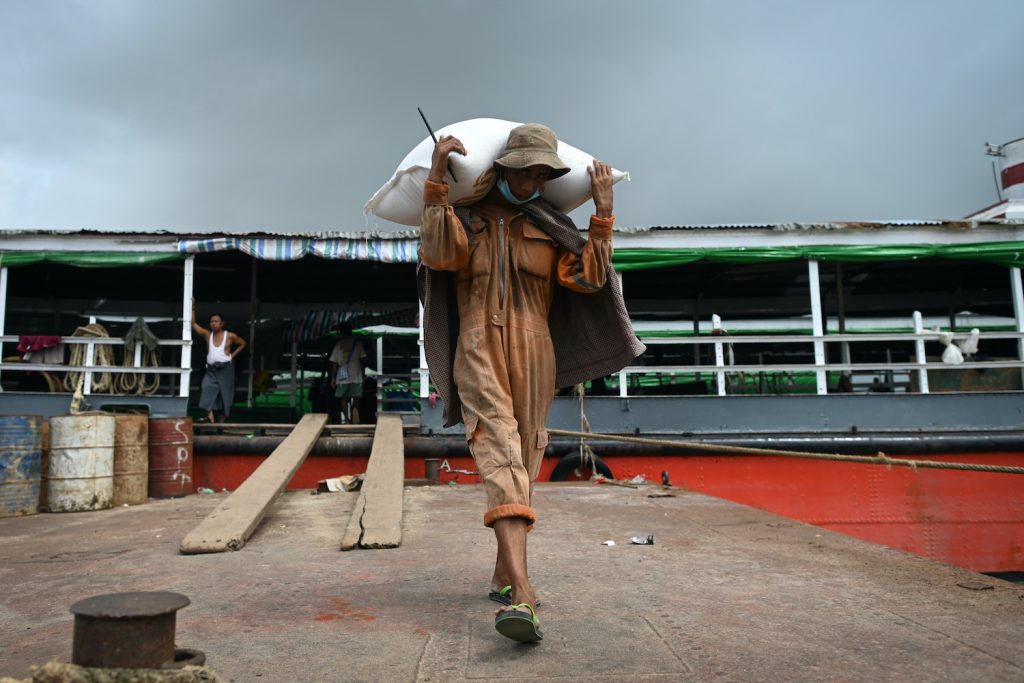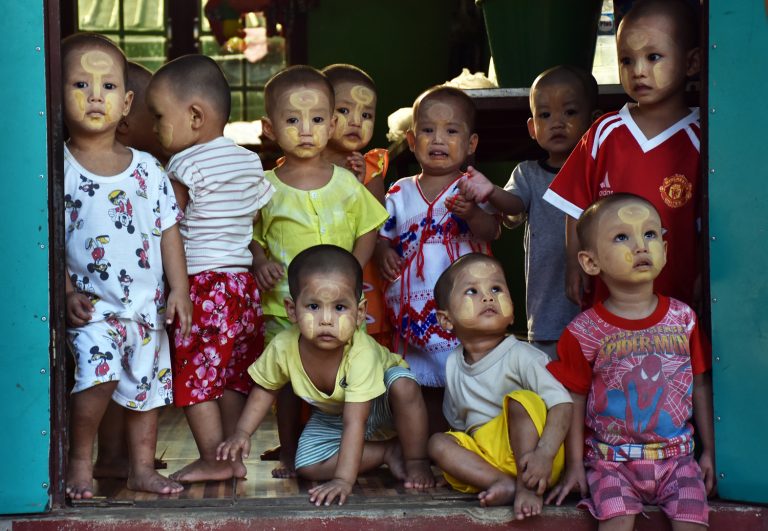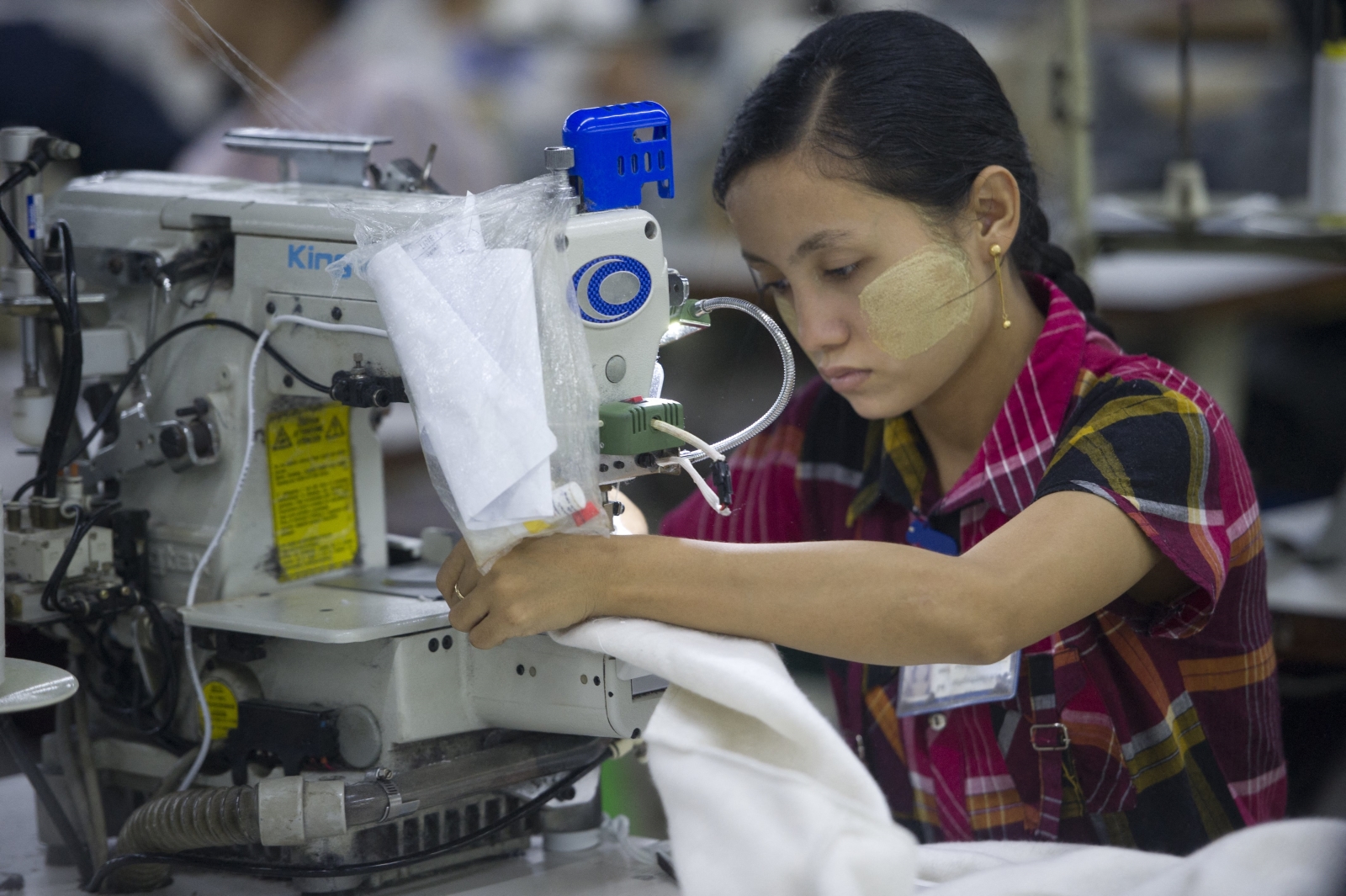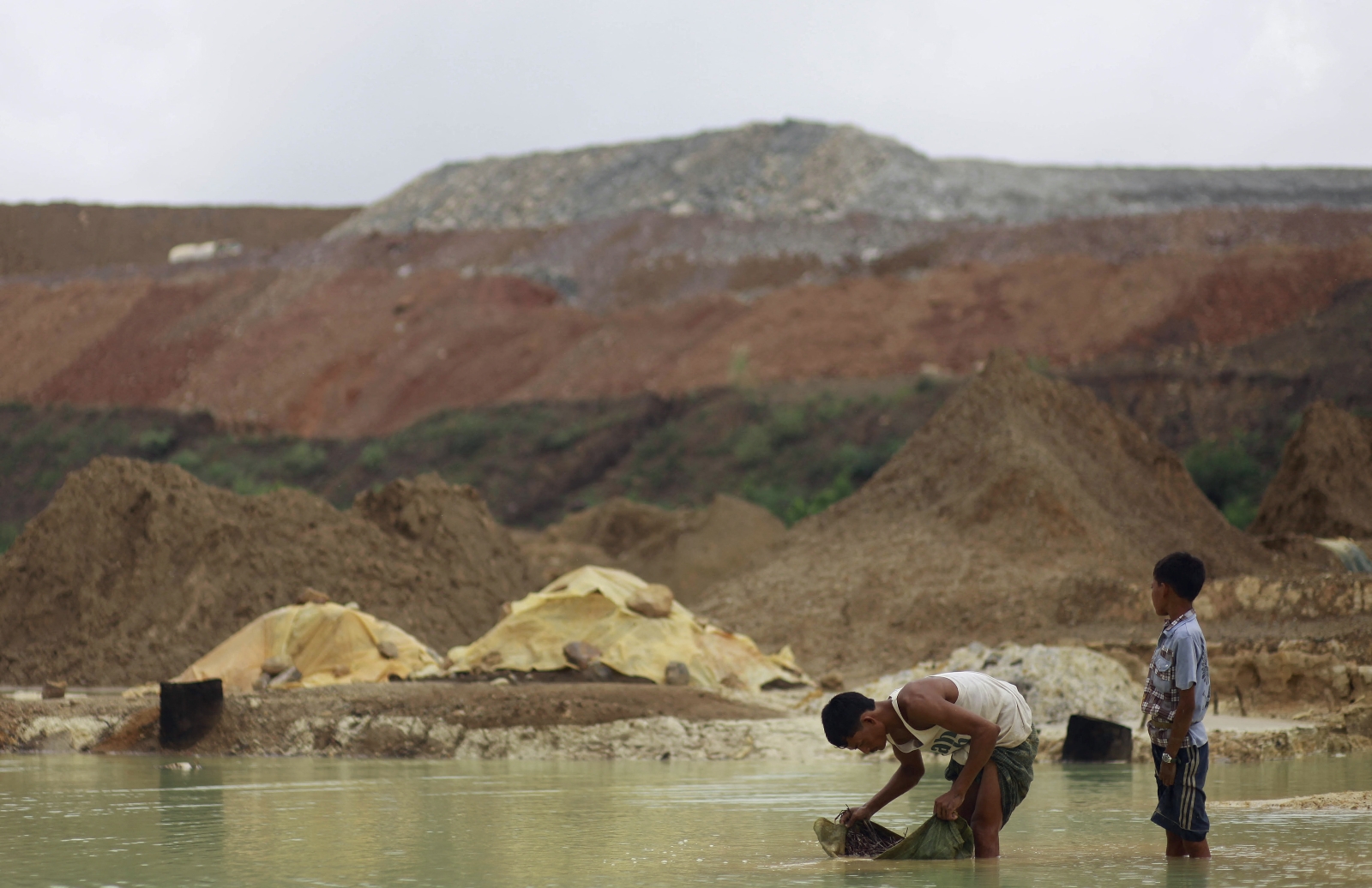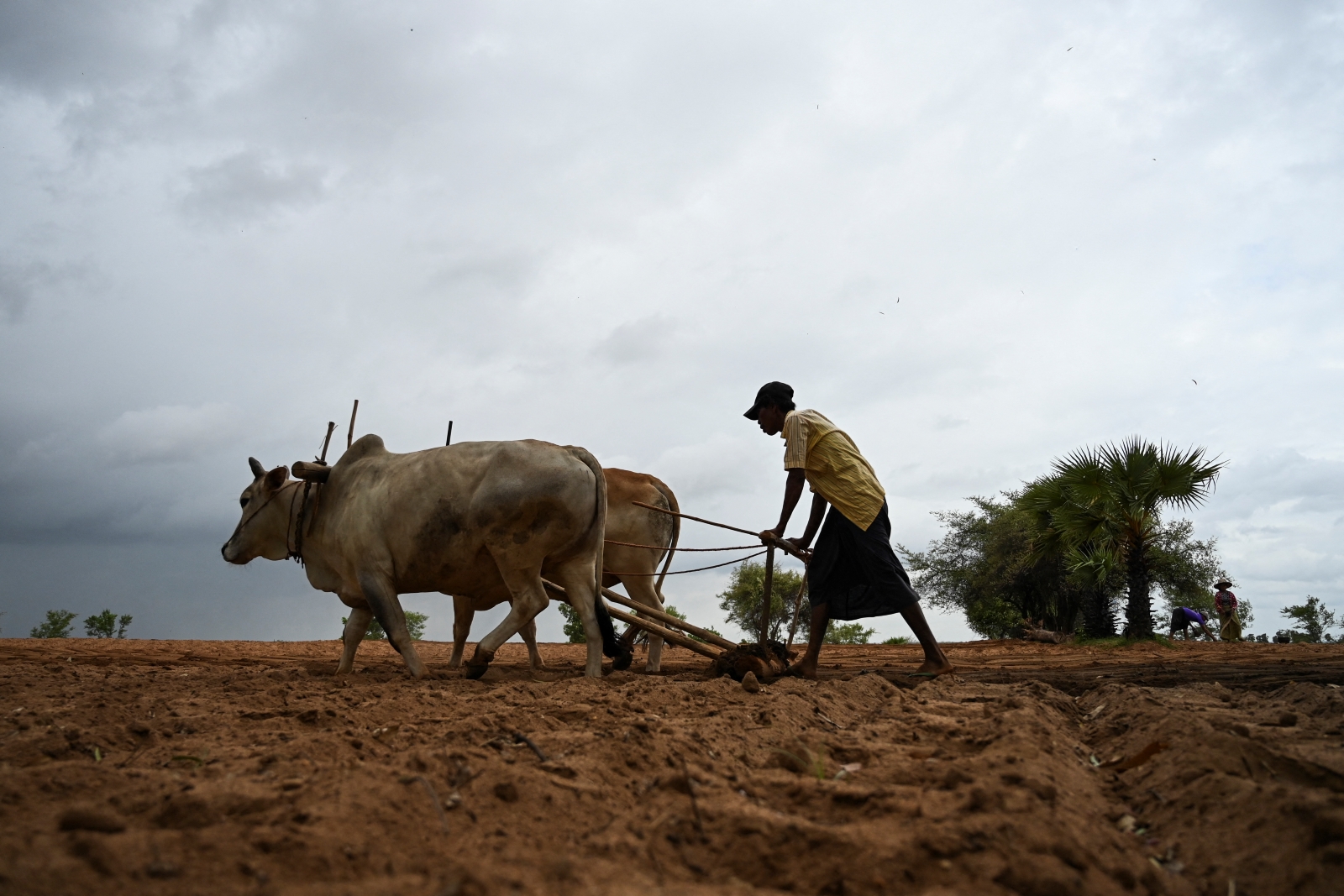The government is planning to purchase paddy at a floor price set to ensure farmers get a decent return and some rice traders are also pushing for another round of rice-buying to maintain the country’s reserve stocks.
By HTIN LYNN AUNG | FRONTIER
U Myint Lwin, acting secretary of the Ministry of Commerce and director general of the Directorate of Consumer Affairs, said tenders had been called from merchants in the targeted state and regions and after they were completed the government would announce the volume of paddy it plans to buy.
The tender window remains open and the winners will be announced on November 10.
“We will be able to start buying paddy from these four states and regions from November 10 based on the tender results. We do not yet know how much we will buy as it will depend on the tender outcome,” Myint Lwin told Frontier.
The monsoon season crop is ready for harvesting in November and produces about 27 million tonnes annually. Figures from the Central Statistical Organization show that Myanmar harvested 27.5 million tonnes of monsoon paddy in the 2018-19 fiscal year, the highest in five years.
Domestic consumption accounts for nearly 90 percent of rice sales, with Myanmar exporting about 2.5 million tonnes of rice and broken rice in 2019-20, according to the Myanmar Rice Federation, an industry group.
However, domestic demand has declined during the second wave of COVID-19 and this has put downward pressure on paddy prices, prompting concerns that farmers may have trouble covering the cost of their investment.
Since by-laws for the Law of Protection of Farmer Rights and Enhancement of their Benefits were introduced in 2018, the government has been setting a floor price for paddy annually and buying paddy in areas where the local price is below the floor price.
This year, the Working Body of Protection of Farmer Rights and Enhancement of their Benefits, a multi-stakeholder statutory body set up under the Ministry of Commerce, has set a minimum paddy price of K520,000 for 100 baskets (a basket is equal to 46 pounds, or 20.87 kilograms), up from K500,000 last year.
The government is using this price to buy paddy through the tenders in areas where the price is low. Farmers are paid once the rice reaches the designated warehouses, Myint Lwin said.
“The price of paddy is falling below K520,000 in some areas and it’s above that price in others so it’s difficult to say for sure how much they will buy and from where,” said Dr Soe Tun, a Central Executive Committee member of the MRF, which is providing technical support for the scheme.
Soe Tun said the government usually sells off the paddy for milling when market demand rises. “This paddy-buying programme is government-funded and also acts like a national food reserve program,” he said.
The purchase of paddy is separate to a rice-buying scheme the government undertook earlier this year to ensure food security.
Back in late April and early May, the ministry purchased about 50,000 tonnes (1 million bags) of rice from the summer crop. It did this by requiring exporters to sell the government 10 percent of their planned export shipments in order to qualify for an export licence.
Although the move was primarily about food security, rice reserves can also help to maintain stable market prices and ensure that farmers receive a reasonable return on their investment, industry sources say.
An executive committee member of the MRF, who asked not to be named, told Frontier that the reserve stocks scheme was good for the country because it gave the government some scope to ensure prices do not go too high or too low.
He said it should benefit consumers and farmers, but if the scheme worked properly it would result in reduced profits for traders who normally buy from farmers when prices are low and sell when they begin to rise.
Merchants have been waiting for prices to fall, but they have remained high because the government is buying “all the rice”, he said, adding that such a development was good for the country.
However, government officials and rice industry specialists say the reserves need to be properly managed to ensure that the rice does not spoil or lose quality because it has been stored for too long.
Although the government purchased the rice, MRF-related companies are storing it in their warehouses. Myint Lwin said the rice purchased earlier this year was still in good condition because it had been stored properly.
“The nature of rice means it cannot be stored for too long or we may encounter a loss of quality. At the same time, we need to make sure we have rice in case of an emergency, so we need to swap the old rice with fresh stocks,” he said.
The maximum period for which rice can be stored is just over a year. A rice merchant who asked not to be named said maintenance costs for stored rice were high, partly because special storage methods were needed to control moisture content. He said domestic consumers usually preferred rice from the previous year’s crop rather than newly-harvested rice. “Selling old stocks and buying newly harvested rice for storage is a good plan,” he added.
That leaves the question of what to do with the rice remaining in storage. Almost 400,000 bags have already been sold from the first acquisition, leaving 600,000 bags (30,000 tonnes) in storage.
U Lu Maw Myint Maung, the MRF secretary, agreed that the rice in storage could be kept in good condition for another one or two months but after that its quality may deteriorate.
The MRF advised the government to quickly sell off the old stocks because they were nearing their storage time limit and buy new rice, he told Frontier, but it was not clear what it would decide.
“The plan is to buy paddy at the moment because it is harvest time, but I hope that later the government will resume buying rice once the current stocks are all sold,” he said.
U Ye Htut Naing, a director of the Directorate of Consumer Affairs, told Frontier that the majority of the reserve stocks were in Yangon, while there were smaller quantities in Mandalay and Nay Pyi Taw.
The government has sent 5,000 bags to Rakhine State and 6,000 bags to Kachin State to combat food insecurity, but it’s not clear what it will do with the rest.
One option is to distribute the rice to needy people who are facing difficulties because of COVID-19.The second wave of the pandemic has exacerbated the economic impact of the virus and strict stay-at-home orders imposed on most Yangon townships since September 21 have created hardship for low-income families.
The government collected household lists in late September in an apparent move to respond to the situation, but as of November 3 no plan for providing food and emergency funding to the needy had been released.
“Only the National-Level Central Committee for Prevention, Control and Treatment of COVID-19 will know what the plan is for poor households,” Myint Lwin said.


